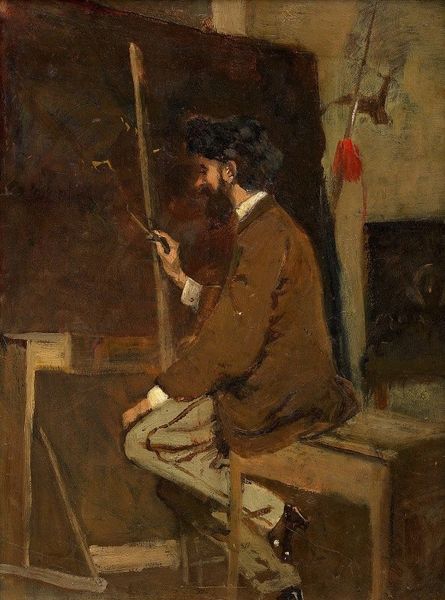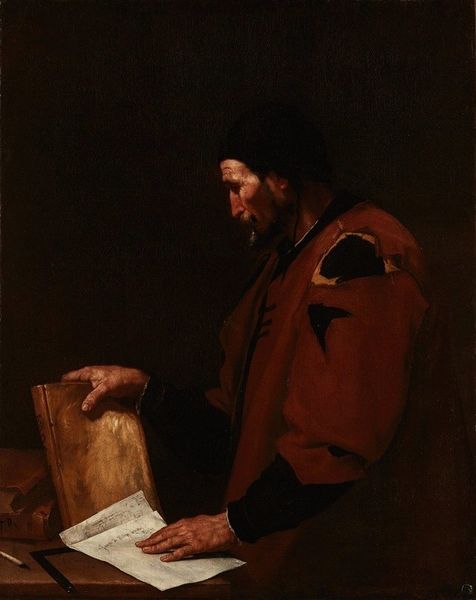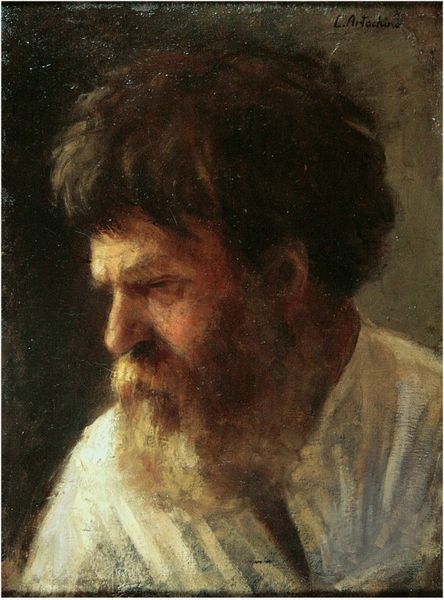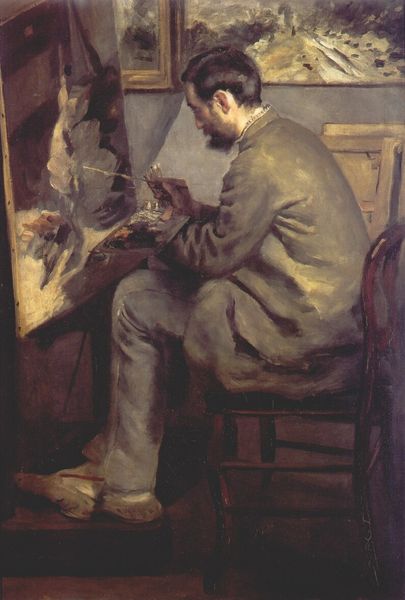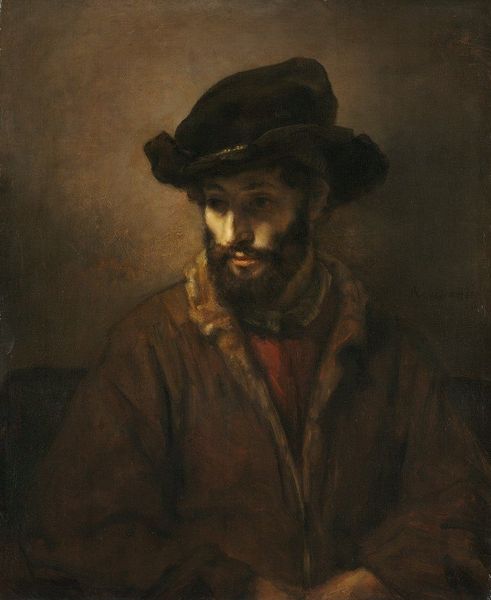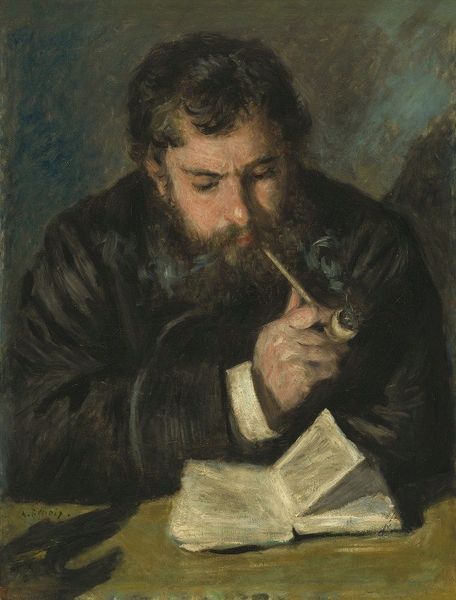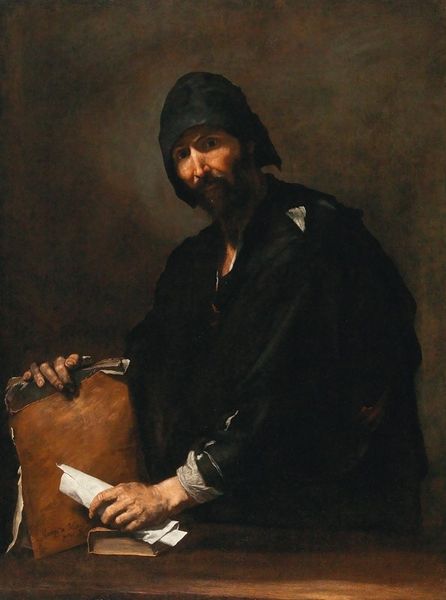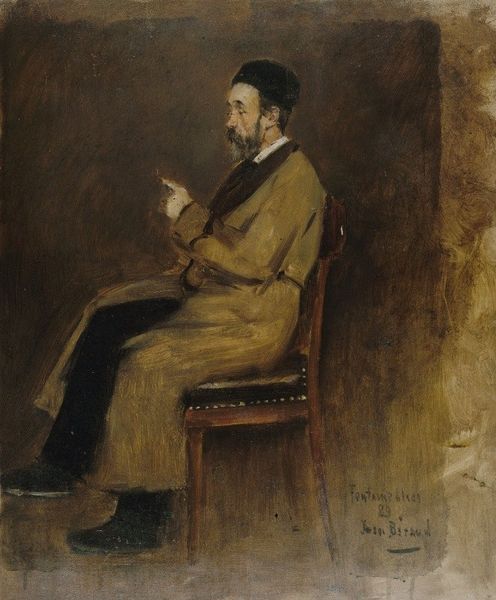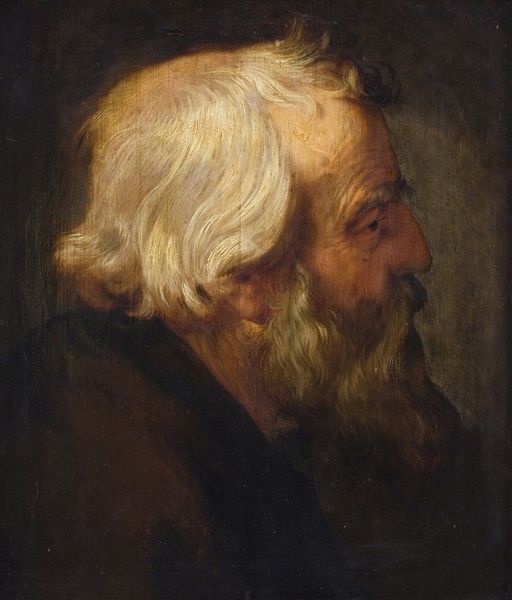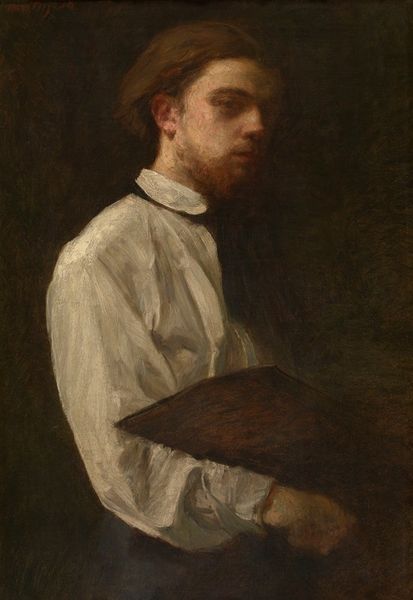
Copyright: Public Domain: Artvee
Curator: Here we have Gustave Courbet's "Alphonse Promayet," an oil painting completed in 1851. It depicts a man, presumably Promayet, engrossed in reading. Editor: It’s moody, almost theatrical, isn’t it? The lighting is quite dramatic. The violin he’s carrying makes me wonder what kind of music he might play or what his relationship to his instrument really is. Curator: Promayet was indeed a musician and writer, central to Courbet's circle of friends. Looking closely at the work, we see how Courbet elevates the artistic merit of a musician within the Parisian Bohemian scene of the time, perhaps challenging notions of class and artistic hierarchy. Editor: It’s interesting that you point out his Bohemian ties; you can sense it within the visible brushstrokes, can’t you? There is very clear, deliberate layering to achieve shadow. Look at the textures of his coat, juxtaposed to the more delicate lines in his face. We see artistic skill and material economy right here. Curator: Precisely. Courbet, positioning himself within the Realist movement, was also engaging with class and male identity. He rejects idealized portrayals of the academy for the real figure. Considering he lived in a historical moment marked by burgeoning socialist movements, how does situating Promayet’s portrayal in relation to shifting attitudes of masculinity further add meaning to our interpretation of his artwork? Editor: It feels almost like labor is present within each deliberate brushstroke. In the subtle handling of the pigments, Courbet invites us to not only see Promayet, but to acknowledge his making. And perhaps he is reminding the Parisian Bourgeoisie of all of the hard work going on beneath them. Curator: I agree, I also wonder how we view Promayet, not only within his social circle, but within the broader context of social change and class identity that surrounded Courbet’s revolutionary aesthetic project. Editor: Well, it is undeniable: through this work we see not only a sensitive portrayal, but also an invitation to reconsider art’s role in reflecting a world in flux. Curator: Absolutely. This painting invites us to examine Promayet, but also the period itself and the dialogue between Romanticism and Realism that shaped its cultural fabric.
Comments
No comments
Be the first to comment and join the conversation on the ultimate creative platform.
